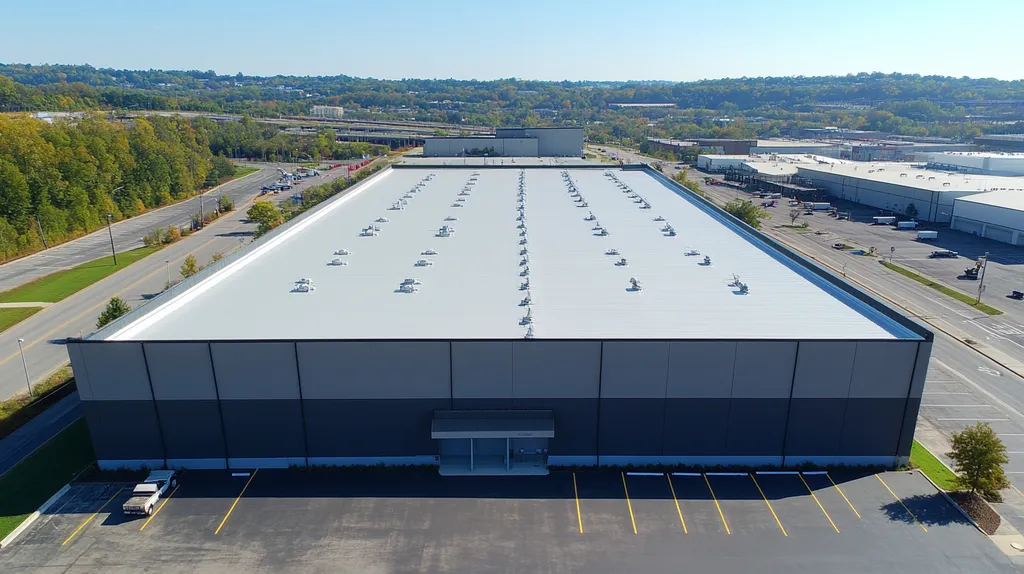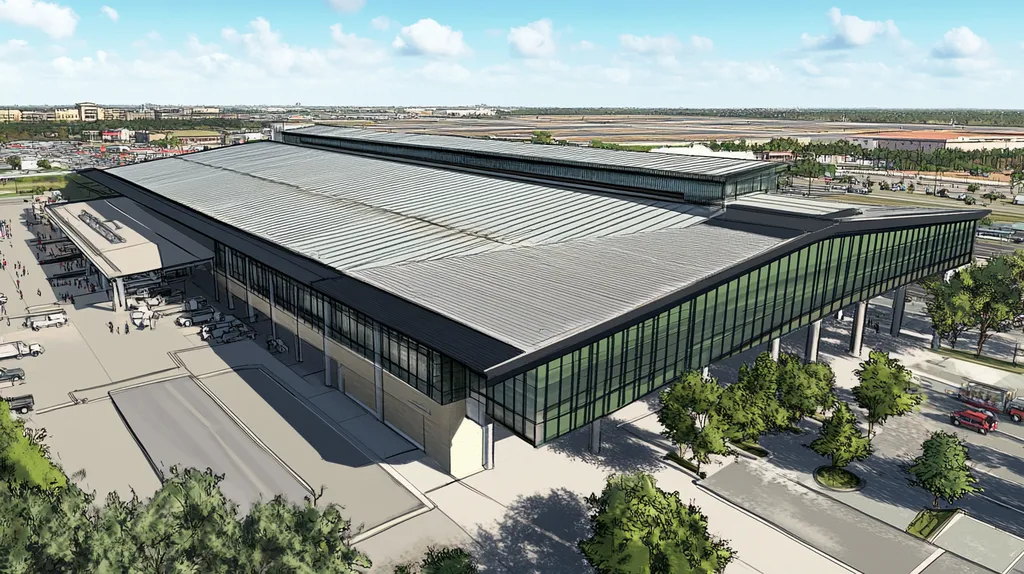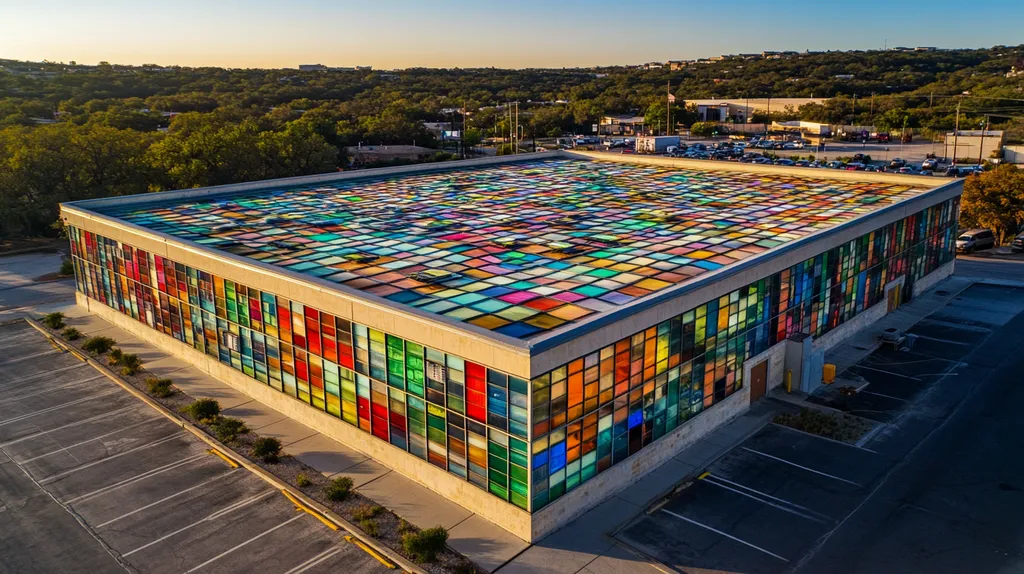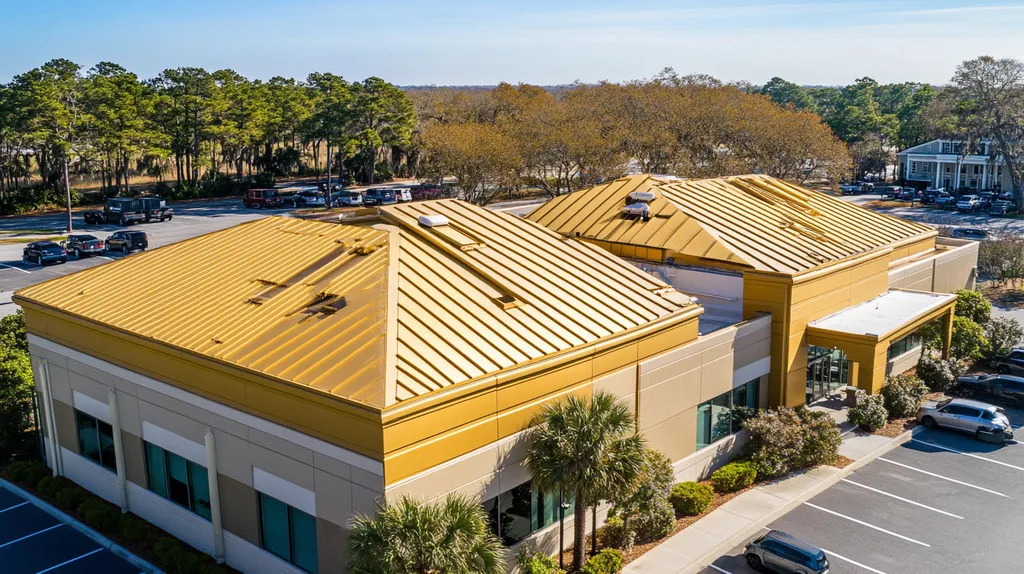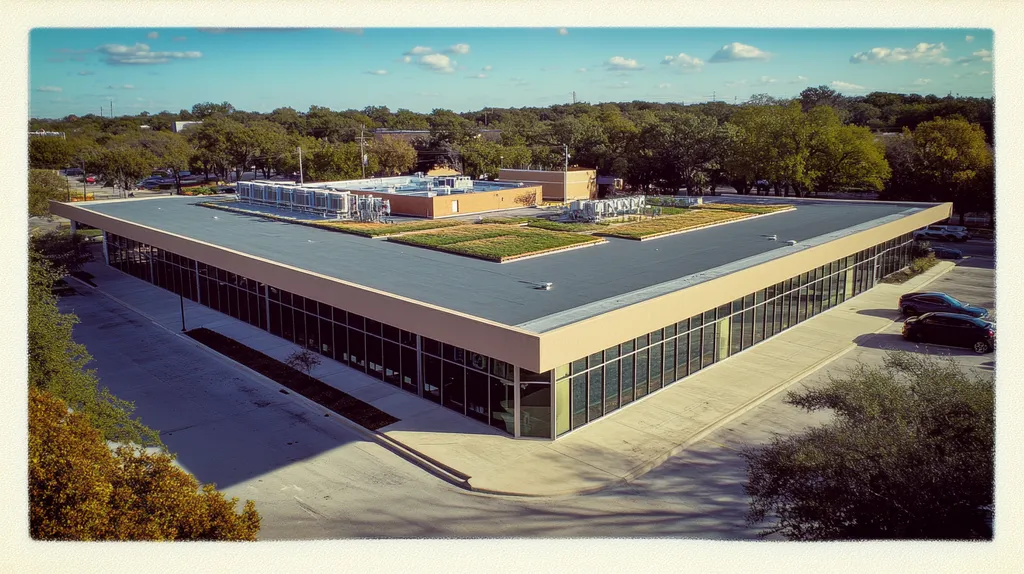Nearly 60% of commercial buildings face rodent-related roof damage each year, leading to millions in repair costs and compromised structural integrity.
While traditional roofing focuses on weather protection, today’s commercial properties require sophisticated systems that actively deter persistent pests.
From specialized materials that resist gnawing to innovative design features that eliminate entry points, modern roofing solutions offer multiple layers of defense against unwanted visitors.
This guide explores the essential elements of rodent-resistant commercial roofing, helping property owners and facility managers make informed decisions to protect their investments.
SECTION 1: THE BASICS EXPLAINED
Rodent invasion is not just a pesky inconvenience; it poses significant risks to commercial roofs and the overall integrity of your building. In fact, nearly one in three commercial properties experience operational hiccups due to rodent activity. Grasping how a thoughtfully designed roof can prevent these unwelcome invaders is crucial for safeguarding valuable assets and ensuring long-lasting durability. This section will break down essential roofing concepts that can help you thwart rodent issues effectively.
What It Is (In Plain Language)
A commercial roof built to combat rodent activity features specific elements designed to keep these pests at bay. This includes sealing openings, utilizing materials that rodents can’t easily gnaw through, and thoughtful designs to curtail potential nesting spots. Essentially, these roofs act as a protective shield, reducing entry points and vulnerabilities.
Materials like metal, concrete, or modified bitumen provide robust defenses against the physical assaults from rodents. Plus, a smooth roof surface makes it challenging for them to find cozy corners for their nests. With these elements in play, a roof transforms into a fortress, standing guard against unwanted guests.
But it’s not just about using sturdy materials; intelligent engineering is key. Roofs should boast a seamless design, avoiding gaps or overlaps where rodents might sneak through. These seemingly minor details are often exploited as pathways into the building.
In short, a rodent-resistant roof melds strength with smart layout choices, forming a frontline defense. Understanding these fundamentals empowers property owners and facility managers to make informed decisions regarding roof design.
Why It Matters (To Your Building)
Neglecting rodent-proofing measures can lead to dire structural and financial repercussions. Damage caused by rodent activity can drain businesses of thousands from repairs, lost inventory, and a drop in operational efficiency. A weakened roof not only invites pests but also sets the stage for water damage and mold growth.
Rodents have a knack for chewing through insulation and wiring, leading to elevated utility costs and even fire hazards. Preventing these costly issues requires proactive design and consistent maintenance. A well-planned roofing strategy safeguards both the building’s integrity and its occupants.
Moreover, a roof susceptible to rodent activity can tarnish your property’s reputation. A building that appears neglected might deter potential customers and undermine employee morale. Investing in rodent-resistant roofing is not just practical; it’s also a way to enhance your business’s image.
Ultimately, prioritizing rodent-resistant roofs translates to long-term savings, improved safety, and enhanced structural reliability. It’s vital for property owners to grasp these implications when choosing roofing solutions.
How It Works
Rodent-proof roofing employs various engineering principles to create a less inviting environment for pests. First, effective drainage systems are crucial; they prevent standing water, a magnet for rodents. An intelligently designed roof slope also helps maintain surface integrity and reduces the chance of infestations.
Additionally, proper ventilation is essential. It promotes airflow, lowering humidity levels in the attic and making it a less favorable space for rodents. Incorporating vent screens can further deter these pests while still allowing for necessary ventilation.
Also, integrating barriers like vapor barriers can boost the roof’s resistance. These serve a dual purpose: controlling moisture while also blocking common rodent entry points.
In summary, understanding how a rodent-resistant roof operates equips decision-makers to better protect their properties. By focusing on drainage, ventilation, and barriers, facility managers can create an environment that’s far less welcoming for these persistent nuisances.
SECTION 2: PRACTICAL APPLICATIONS
For commercial property owners and facility managers, the stakes of rodent activity are sky-high. An invasion can lead to severe damage, expensive repairs, and potential health hazards for everyone inside. Alarmingly, nearly one in four businesses has reported a rodent sighting in the past year, highlighting the urgent need for effective roofing solutions that can stand firm against these unwelcome guests. Grasping the specific roofing materials and methods available is critical for preventing infestations and ensuring the longevity of your roof.
Common Uses & Examples
There are specialized roofing materials specifically engineered to fend off rodent invasions. For instance, metal roofing systems act as a tough barrier against rodents thanks to their hard surfaces and seamless installations. In addition to metal, single-ply roofing systems like TPO or PVC are gaining popularity for their durability and resistance to tearing, reducing potential entry points.
Another strong contender is the use of reinforced membranes, which significantly boost durability against pest invasions. Properties with these roofs frequently report fewer maintenance issues related to rodents. Effective examples can be found in industrial warehouses, food processing centers, and healthcare facilities where maintaining hygiene and structural integrity is non-negotiable.
Additionally, a raised design for roofing can enhance inspections, making it simpler to identify vulnerabilities where rodents might try to slip in. By choosing these specific applications, property managers can dramatically reduce the risk of rodent activity.
When You Need It Most
Timing is everything when selecting the right roofing system to combat rodent activity. During initial construction or major renovations, property owners have a golden opportunity to integrate rodent-resistant solutions, paving the way for notable long-term savings on damages and pest control.
Furthermore, as roofs age, investing in upgrades becomes essential. Older roofing that exhibits wear or damage can create weak spots, inviting rodents in. It’s crucial for property owners to conduct regular inspections to assess their roofing systems and implement necessary modifications before problems escalate.
Seasonal changes can also affect rodent behavior. As winter approaches, these critters look for warm shelter, making it vital to prep roofs ahead of time. Early fall is the perfect window for property managers to ensure their roofing materials are adequately fortified to prevent unwanted incursions.
Interactions With Other Systems
Successful rodent management necessitates a synchronized effort with other building systems. For starters, pairing roofing solutions with effective gutter and drainage systems is essential. Proper drainage helps eliminate standing water, which is like a buffet for rodents, so managing this aspect minimizes their potential habitat.
Additionally, integrating pest control measures directly with roofing systems amplifies protection. For example, sealing gaps around HVAC units, chimneys, and vents—common entry points—provides a comprehensive barrier against rodents.
Moreover, collaborating with pest management professionals can optimize the roofing selection process. Their insights help pinpoint vulnerabilities in existing roofs and recommend tailored solutions based on the specific risks associated with each type of property.
By understanding these interactions, property managers can create a coordinated approach to protect their assets from rodent activity, ensuring their roofing systems stand the test of time while maintaining reliability.
SECTION 3: KEY TERMINOLOGY DECODED
Understanding roofing terminology is essential for property owners and facility managers facing the looming threat of rodent activity. A small misunderstanding can snowball into poor decisions, expensive repairs, and insufficient pest prevention. By grasping the key terms related to roofing, decision-makers can better evaluate materials and methods vital for thwarting rodent invasions. This section simplifies essential concepts, facilitates effective communication, and empowers informed choices.
Essential Terms Explained
“Flashing” might sound technical, but it simply refers to thin metal strips that direct water away from joints in a roof, preventing leaks and reducing rodent entry points significantly. Understanding “drainage” is equally vital—it describes how water is managed on a roof. When drainage systems function efficiently, they help prevent standing water, which is an attractive habitat for rodents.
Another significant term is “insulation.” While it provides thermal resistance to keep your building cozy, it’s essential to ensure the insulation is rodent-proofed; otherwise, it can be easily compromised. Different insulation materials come with varying levels of resistance to rodent damage, so choose wisely. Lastly, “decking” is the structural base of a roof; selecting the right decking material can amplify durability against pest infiltration.
Industry Jargon Translated
In the world of roofing, you may hear terms like “ballast” and “membrane” tossed around. Ballast refers to hefty materials laid over a roof membrane to keep things secure, particularly in flat roofs. This not only resists wind but also makes it harder for rodents to burrow into precarious spaces. On the other hand, “membrane” describes the water-resistant layer that protects your building from leaks. Choosing the right type can enhance durability while limiting potential rodent access.
“Terminations” are the edges of the roof where the membrane meets other surfaces. Proper termination seals are essential; any gaps here can become entry points for pesky rodents, leading to costly damages. Understanding how these components work together is crucial for crafting effective pest prevention strategies.
Measurement & Units Simplified
When delving into roofing, terms like “square” and “pitch” frequently pop up. One square measures 100 square feet of roofing surface, which is key for estimating material needs and calculating costs. Roof pitch, the steepness of a roof, is expressed as a ratio of vertical rise to horizontal run. A steeper pitch can deter some animals from gaining access due to its challenging angle.
Additionally, “R-value” indicates how effective insulation is; the higher the R-value, the better the thermal resistance. This characteristic can also help deter rodent habitation. Lastly, don’t underestimate the importance of “gutter size.” Larger gutters can effectively manage water flow, diminishing the risk of standing water that attracts unwanted rodents.
SECTION 4: DECISION FACTORS
Choosing the right commercial roof is no small feat, especially with increasing concerns about rodent activity. Property owners must navigate a labyrinth of factors that influence both upfront costs and long-term performance. Certain roofing materials may be more effective at keeping pests out, but they often come with a steeper price tag. It’s essential to consider cost implications, performance trade-offs, and the durability of roofing options to make an informed and strategic decision.
Cost Considerations
Cost is typically the first factor on any property owner’s radar. However, selecting a roofing material requires looking beyond just the initial purchase price. Installation and ongoing maintenance expenses must also be factored in. For instance, while metal roofs might have a higher upfront cost, they can deliver substantial savings later due to their remarkable durability and minimal maintenance needs.
Moreover, some materials offer better resistance to rodent activity, resulting in reduced long-term costs for pest management. An investment in a rodent-deterring roof can spare property owners from unforeseen repair expenses caused by infestations and damage.
It is vital to budget for all aspects of the roofing decision, including potential pest-proofing measures. While higher-quality materials may initially appear costly, the long-term savings they provide can be significant. A holistic view of the total cost of ownership is essential for making savvy choices that curtail future risks.
Performance Trade-offs
Performance trade-offs are an inevitable part of the roofing decision-making process. Each roofing material has its unique set of attributes, which can either bolster or weaken its defenses against pests. Low-slope roofing systems might save money but could become a haven for standing water, attracting unwelcome guests.
In contrast, materials like TPO or PVC are engineered for excellent pest performance thanks to their smooth surfaces, which deter nesting. Yet, these materials can be prone to punctures, creating potential entry points for rodents if not properly cared for.
Finding the right balance between performance characteristics, durability, and maintenance needs is crucial. A thorough evaluation of how each roofing option performs under various conditions will guide property owners to the best solution.
Lifespan & Durability Factors
The lifespan and durability of roofing materials play a pivotal role in making a wise decision. A roof that lasts longer can provide better returns on investment, but its resistance to pests is equally important. While some materials may boast a lengthy lifespan, they can deteriorate in ways that invite rodent infestations.
For example, asphalt shingles might have a shorter lifespan than metal or modified bitumen, but they can be particularly enticing for rodents if not adequately secured. Conversely, a sturdy metal roof might last up to 50 years while effectively repelling pest entry.
Selecting materials that emphasize longevity and durability is key not only for robust pest resistance but also for extending the overall lifecycle of the roof. An informed choice, integrating both durability and pest resistance, can save time and costs associated with repairs.
A comprehensive evaluation of lifespan alongside pest protection strategies empowers property owners to align their roofing decisions with long-term goals and property values.
SECTION 5: COMMON CHALLENGES
Rodent infiltration can wreak havoc on commercial roofs, threatening structural integrity and leading to costly repairs. The National Pest Management Association reveals that rodents cause building damage worth thousands each year. For property owners and facility managers, staying vigilant against these challenges is key to protecting investments and maintaining durable roofing systems.
Frequent Problems & Solutions
Rodent activity can lead to serious issues like insulation damage and compromised structural elements. These pests chew through roofing materials, creating not only entry points for moisture but also new avenues for other intruders. Regular inspections are crucial for spotting early signs of problems and addressing them promptly.
Choosing robust roofing materials, including metal and single-ply membranes, can effectively deter rodents. These materials resist gnawing more successfully than traditional asphalt roofs. If signs of rodents appear, immediate actions—like sealing potential entry points and setting traps—should be taken without delay.
Engaging professional pest control services can further enhance defenses. They can conduct thorough assessments and suggest tailored preventative measures. Regular maintenance is vital to protect against both rodent activity and water damage, which ultimately contributes to a longer-lasting commercial roof.
Implementing effective solutions not only addresses current rodent issues but also prevents future infestations. Consistent roof cleanings and inspections can eliminate debris and potential nesting sites, making the roof less inviting for unwelcome guests.
Warning Signs To Watch For
Property owners need to be on the lookout for specific indicators of rodent activity on their roofs. Common signs include droppings, nests made from shredded insulation, and small holes or gnaw marks along seams. Identifying these signs early is essential to preventing costly and extensive damage.
Unexpected droppings, especially near vents or downspouts, are often a strong indication of a rodent problem. Additionally, any noticeable smell of urine or decaying matter can suggest a larger infestation at hand. Such warning signs should prompt an immediate inspection to determine the full extent of the issue.
Another indicator is a buildup of debris around the roof’s edges, which can attract rodents looking for shelter. Regularly clearing leaves and other materials is necessary to maintain a clean and less inviting environment. Property managers should also keep an eye on overhanging branches that could provide easy access routes for rodents.
If the sounds of scratching or scurrying infiltrate the building from above, it may signal rodent activity within the roofing structure. Early investigation and action can prevent minor problems from escalating into greater, costlier repairs.
Preventative Approaches
Proactive measures are crucial for keeping commercial roofs safe from rodent activity. Regular inspections help identify weaknesses, while preventative maintenance reinforces roof integrity. Installing rodent-proof strategies—such as using screens and sealing gaps—can drastically reduce the risk of intrusion.
Facility managers should focus on reinforcing high-risk areas, including vents, gutters, and roof edges where gaps may appear. Employing materials that resist gnawing is also advantageous in creating effective barriers against intruders.
Landscaping plays a significant role too. Trimming trees and bushes near the building limits rodent access routes to the roof. A strategic landscaping plan can further bolster the property’s defenses, minimizing opportunities for rodents to reach vulnerable areas.
Finally, training staff to recognize signs of rodent activity empowers them to take prompt action when issues arise. Awareness combined with a strong preventative strategy ensures a well-rounded approach to safeguarding commercial roofs from pesky infestations.
SECTION 6: NEXT STEPS & RESOURCES
Rodent activity can create havoc on a commercial roof, leading to expensive repairs and diminished property value. It’s vital for property owners and facility managers to grasp how to select roofing materials and installation practices that discourage these pests. Taking proactive measures, such as asking the right questions and staying updated on industry standards, is essential for protecting valuable investments.
Questions To Ask Providers
When engaging with roofing providers, certain key questions can unveil their strategies for tackling rodent issues. Start by asking about the materials they recommend. Are these materials equipped with rodent-resistant features? For instance, metal roofing systems often stand out as superior choices over traditional shingles thanks to their durability and ability to block potential entry points.
Next, dive into their installation techniques. Proper sealing around vents and connections is crucial in curtailing rodent access. Providers should be transparent about the steps they take during installation to minimize risks of future infestations.
Maintenance plans are another critical inquiry. Can they assure regular inspections to spot vulnerabilities before they escalate into significant concerns? Ongoing support is invaluable when it comes to monitoring both rodent activity and general roofing health.
Lastly, ask about their experience with similar properties. Understanding their track record in preventing rodent-related problems will help you choose a provider that can adequately address your specific needs.
Industry Standards & Guidelines
There are established industry standards geared toward minimizing rodent activity in roofing systems. The National Roofing Contractors Association (NRCA) lays out guidelines emphasizing comprehensive design and installation practices. Familiarizing yourself with these resources will help align your decisions with best practices in the field.
Additionally, local building codes may set specific requirements for rodent prevention. Some areas mandate the use of certain pest-resistant materials, which can bolster your roof’s defenses. By adhering to these codes, property owners not only mitigate the risk of infestations but also enhance the overall integrity of their roofs.
Resources from organizations like the Roofing Industry Committee on Weather Issues (RICOWI) offer insights into the latest developments in rodent prevention techniques. Engaging with workshops, webinars, and publications dedicated to this subject can further boost your knowledge.
Ultimately, keeping informed about industry standards enables property owners to set clear expectations from their roofing providers, ensuring access to top-quality solutions in the market.
Further Learning Simplified
Continuous education is essential for mastering effective rodent prevention strategies. Numerous online resources specialize in commercial roofing, offering information on material choices, installation best practices, and maintenance routines tailored for your needs. Websites belonging to roofing contractor associations or environmental health organizations can be particularly valuable.
Industry trade shows represent a fantastic opportunity for networking and discovering the latest innovations in rodent prevention. These events allow professionals to engage directly with experts, gaining insights into real-world applications of various roofing solutions.
Online forums and social media groups focused on commercial roofing can also serve as excellent platforms for sharing experiences and strategies for managing rodent challenges. Engaging with peers can yield practical tips and solutions.
By committing to ongoing education, property owners and facility managers will be empowered to make informed roofing choices that deliver lasting protection against rodent activity.
The Bottom Line
With rodent-related damage costing commercial properties over $2 billion annually, choosing the right roofing system is more critical than ever.
Metal roofing and specialized single-ply membranes emerge as leading solutions, offering superior resistance to gnawing and nesting while maintaining structural integrity.
Regular inspections, proper maintenance, and early intervention remain crucial components of any effective rodent prevention strategy.
Property owners who invest in rodent-resistant roofing materials and implement comprehensive prevention plans can expect to save significantly on repairs and avoid costly business disruptions.
The future of commercial roofing lies in innovative materials and installation techniques that actively deter pests while providing lasting protection for valuable assets.
FREQUENTLY ASKED QUESTIONS
Q. How does a commercial roof prevent rodent activity?
A. A commercial roof designed to combat rodent activity includes sealing openings, using tough materials that resist gnawing, and smart layouts that limit nesting spaces. By applying these principles, the roof acts as a barrier, blocking potential entry points and vulnerabilities that these pesky critters could exploit.
Q. What types of commercial roofs are best for rodent resistance?
A. Metal roofing systems are excellent choices against rodent invasions due to their hard surfaces and seamless installations. Additionally, single-ply roofs like TPO or PVC provide robust durability and less chance for rodents to tear through, making them solid options for commercial properties.
Q. What terminology should I know for a commercial roof?
A. Key roofing terms include “flashing,” which directs water away to prevent leaks, and “insulation,” crucial for maintaining thermal comfort. Knowing these terms helps in assessing materials for their effectiveness against rodent problems, ensuring clarity in your roofing decisions.
Q. What factors should I consider when choosing a commercial roof?
A. Cost, performance trade-offs, and durability are critical considerations when selecting a commercial roof. While lower upfront costs are attractive, investing in materials that resist rodent activity—and are durable—can save money on repairs and maintenance in the long run. Balance these elements for optimal protection.
Q. What common challenges do commercial roofs face from rodents?
A. Common issues include insulation damage and structural compromise due to gnawing rodents. Regular inspections can help spot problems early, while using robust materials can deter rodent activity. Taking prompt action when signs of infestation appear is vital to prevent further damage.
Q. How can I prepare my commercial roof for rodent prevention?
A. Start with regular inspections to identify weak spots and seal gaps around vents and connections. Using rodent-proof materials and maintaining cleanliness—removing debris that could attract rodents—are essential steps. Additionally, proper drainage systems minimize standing water, which can draw unwanted guests.
Q. What questions should I ask my roofing provider?
A. Inquire about their recommended materials and their rodent-resistant features. Ask about installation techniques—especially surrounding seals—and their maintenance plans. Understanding their experience with similar properties can also help ensure they effectively address potential rodent issues for your specific needs.

